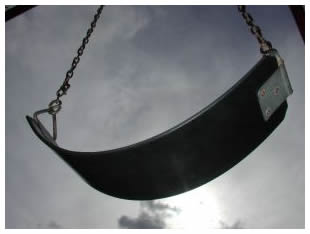 Any parent would be concerned if their child was experiencing voices or seeing objects or people that weren’t really there. Where there is disturbed social interaction, the presence of a voice or voices speaking in negative terms to and about the child, in conjunction with evidence of the child talking to him or herself, there could be cause for a diagnosis of childhood schizophrenia.
Any parent would be concerned if their child was experiencing voices or seeing objects or people that weren’t really there. Where there is disturbed social interaction, the presence of a voice or voices speaking in negative terms to and about the child, in conjunction with evidence of the child talking to him or herself, there could be cause for a diagnosis of childhood schizophrenia.
Schizophrenia can be difficult to positively diagnose in adolescence and young adulthood. It is even more fraught with difficulties when dealing with young children. The age of the child and stage of development must be considered in a diagnosis of childhood schizophrenia. Behaviors that are normal at one age, such as having an imaginary friend, become abnormal if they persist or occur at a more advanced age.
Fortunately, the incidence of schizophrenia in children prior to the onset of puberty is rare, occurring in approximately one child in every 40,000. Schizophrenia is primary an illness of adolescent and early adulthood, with the average onset occurring between the ages of 18 and 25. Schizophrenia can also occur in older age groups however the peak incident is as outlined above.
While schizophrenia often manifests as an acute episode in adults, the onset is customarily gradual in children and is often preceded by other cues such as delays in speech development and motor skills. The diagnostic criteria is the same for children as adults (see What is Schizophrenia and Schizophrenia: Diagnostic criteria and Symptoms of Schizophrenia) although symptoms appear prior to the onset of puberty.
Like adults with the disorder, childhood sufferers may experience paranoia and unusual beliefs unrelated to reality. There may also exist a depressed or flattened mood, impaired concentration, poor social skills, poor eye contact, and minimal body language and facial expression. Thus they share some symptoms in common with autism and may be initially wrongly diagnosed with this developmental disorder.
However, the presence of hallucinations and delusional thoughts distinguish it from autism and other related conditions. In addition, autism is usually apparent early in life, certainly by the age of three, By contrast childhood schizophrenia usually presents at a much older age, typically around seven. Children who have been victims of abuse often present with claims of seeing visions of the perpetrator or hearing their voice. This is not a sign of childhood schizophrenia, but more likely to be a symptom of Post Traumatic Stress Disorder (see What is Post-Traumatic Stress Disorder and PTSD: Symptoms and Treatment).
Treatment of children with schizophrenia is similar to that of adults with antipsychotic medication leading the way. Counseling and social skills training is also useful in assisting the child to integrate better with their peers. Special education classes are also usually required to facilitate learning.
Contact Beth McHugh for further information or assistance regarding this issue.

